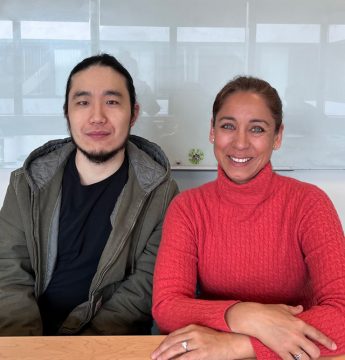Findings from a new study, led by researchers at Dartmouth’s Geisel School of Medicine and published in Nature Immunology, have uncovered key functional differences in macrophages—a type of white blood cell that plays a pivotal role in the body’s innate (general) immune system as a first-line defender against pathogens.
Found in all tissues, macrophages are known to carry out functions such as surrounding and digesting microorganisms, clearing out debris and dead cells, and stimulating the action of other immune and non-immune cells—including those involved in adaptive (specialized) immunity. Until recently, tissue-resident macrophages were thought to be largely homogeneous, that is, very similar in their makeup and function.

“There are two main reasons why the level of diversity in macrophage types has been underappreciated,” explains Claudia Jakubzick, PhD, an associate professor of microbiology and immunology at Geisel who served as senior author on the study. “The first is that some of the macrophage populations are very sensitive cell types that die upon extraction. Through consistent practice and a deepening understanding of their nuances, we’ve developed methods to sustain them for research purposes.”
“Secondly, the development of newer technologies in our field, such as single cell sequencing and spatial transcriptomics, are allowing us to see the true diversity of macrophages,” she says.
Working in collaboration with Fred Kolling, PhD, director of the Single Cell Genomics Core at Dartmouth’s Center for Quantitative Biology, the team identified, in both mice and humans, ten distinct interstitial macrophage (IM) subsets in what was previously thought to be a relatively homogeneous population. These interstitial macrophages expressed different chemokine (chemoattractant cytokines) profiles along with other functional genes, outlining their heterogeneity.
Xin Li, a graduate student in the Jakubzick Lab and first author on the study, states, “Our findings suggest that each of these subsets is responsible for recruiting different immune cells via their chemokine expression into the local environment to address the specific infection, inflammation, or disease that may be occurring in that setting.”
To prove their hypothesis, the study team created a mouse model that allowed them to selectively deplete IM subsets involved in recruiting immune cells that respond to allergic airway disease, causing inflammation in the lungs. “Consequently, the immune cells that would normally respond did not come to the site, and the onset of the allergic disease was significantly diminished, which confirmed what we had proposed,” says Li.
Looking ahead, Jakubzick and Li believe that one important next step in their research will be to study the role of resident IMs in the context of cancer.
“It turns out that the macrophages that we’re looking at are known to be important in forming tertiary lymphoid structures—localized hubs of specialized immune cells that appear to be anti-tumorigenic, and perhaps improve prognosis and outcomes in cancer,” says Jakubzick. “Further investigation into this process will give us a greater understanding of the role that tissue-resident IMs play in cancer immunity.”
Founded in 1797, the Geisel School of Medicine at Dartmouth strives to improve the lives of the communities it serves through excellence in learning, discovery, and healing. The Geisel School of Medicine is renowned for its leadership in medical education, healthcare policy and delivery science, biomedical research, global health, and in creating innovations that improve lives worldwide. As one of America’s leading medical schools, Dartmouth’s Geisel School of Medicine is committed to training new generations of diverse leaders who will help solve our most vexing challenges in healthcare.